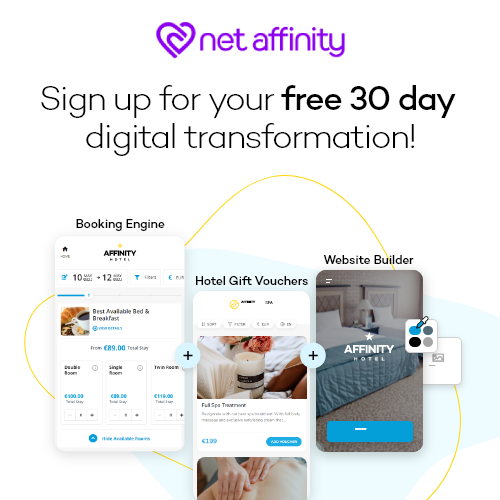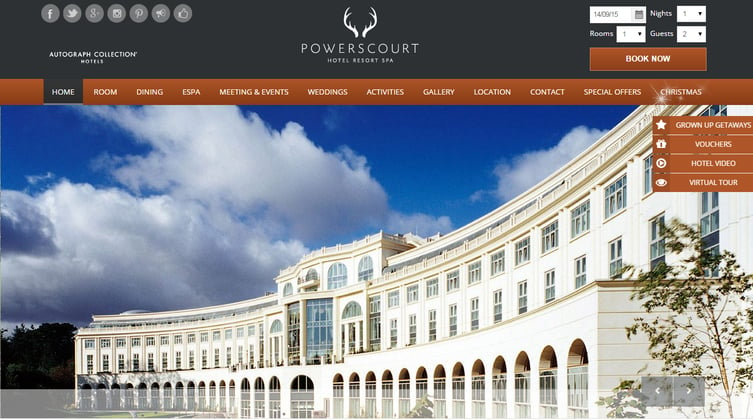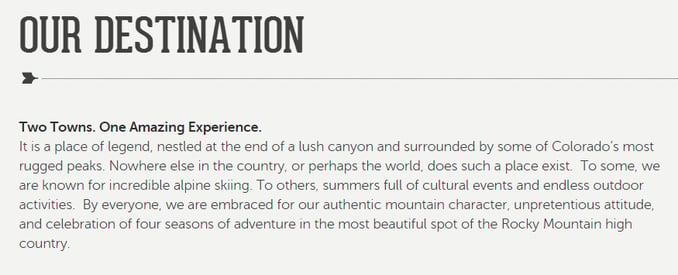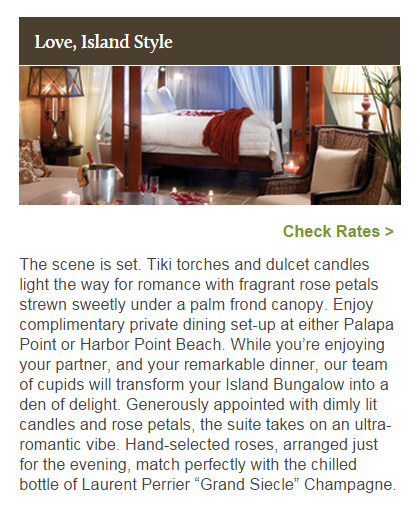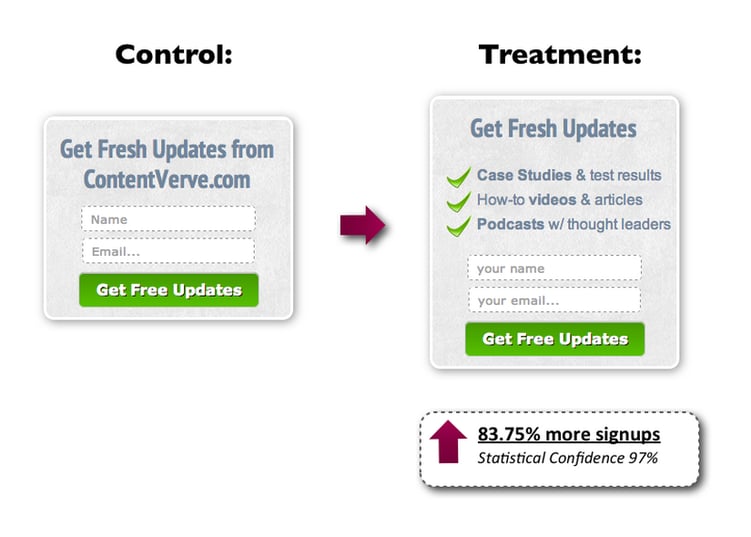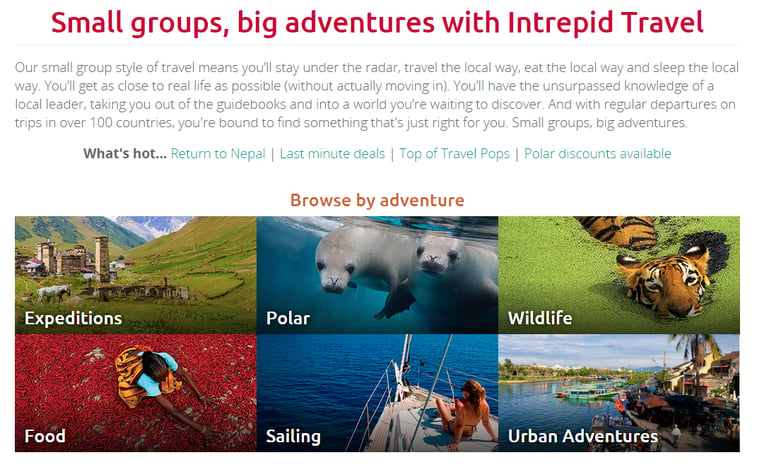Writing copy for your hotel website might seem like a secondary activity, one that can be thrown together at the last minute once your website is designed and you’ve got great pictures ready to go. It’s not!
Your website copy is an opportunity to tell guests why your independent hotel is truly a unique property, setting it apart from big brands and chains. It’s also your chance to persuade guests to book then and there, giving you a direct booking.
Unfortunately, writing copy that resonates with guests is one of the great challenges for hotels, and it’s often one that’s pushed aside.
The challenge can be overcome, though. The first step is to develop and constantly keep in mind your customer personas: when you’re writing to one or two people instead of an anonymous mass of potential guests, your job gets a lot easier.
After that, with a few basic guidelines to follow and an twist of your own hotel’s personality, you can create copy that draws in guests and convinces them that you’re the hotel for them.
We’ve created a guide to 4 ways to great copy that resonates with your guests, creates vivid mental pictures and draws on their emotions.
1. Tell a Story
Your copy should tell a story for your guest, starring them. It should be something that draws them in, and makes them consider what it would be like to stay at your hotel. To do this, it can’t be boring, cliched, or overwritten.
You don’t need to spend hours on Thesaurus.com – instead, think about what it’s really like to stay at your hotel. What are the best parts about eating in your hotel restaurant? What adventures have your past guests had in the local area?
Use descriptive language. What sounds are there? What does it look like? Is there a particular scent, like lavender, that your hotel spa uses? Think about texture – can guests dive into your Egyptian cotton sheets or take a stroll on the smooth grounds of your golf course?
Take a look at the description from the Powerscourt Hotel’s homepage:
“The Great Sugar Loaf Mountain is visible across the valley, between the tall elegant beech trees. The avenue slopes down, through woodland, before revealing the Palladian elegance of Powerscourt Hotel Resort & Spa, with its breath-taking views. Located on the famous Powerscourt Estate, one of Ireland’s finest estates, with its historic house, beautifully manicured garden and its waterfall, the highest in Ireland, you may be just half an hour from Dublin but it could be a million miles away.”
It does a great job of setting a tranquil, historic, elegant scene in your mind. The language paints a natural picture without being too dramatic or overblown.
It makes use of the hotel’s unique selling points to describe things in a way that makes excellent use of adjectives and descriptive language to get that mental movie moving in your head.
2. Keep Sentences Short and Sweet
“Write to the Chimpanzee Brain. Simply. Directly.” -Eugene Schwartz
In the book The Art of Plain Talk, Dr.Rudolph Flesch analyzes what makes for easy or difficult writing. He recommends that 70-80% of your writing should consist of snappy, one or two syllable words that can be mentally digested with ease.
Longer sentences mean longer thoughts. Longer thoughts require more mental effort to process information. Putting in a little effort isn’t a bad thing, but reading a novel isn’t usually what your hotel websites visitors thought they were getting into!
This is why, in most cases, it’s best to keep your sentences short.
The Telluride website makes great use of short, punchy sentences. It keeps their copy fun, fast-paced and digestible:
Shorter sentences and paragraphs feel easy, and people take the path of least resistance. They also build momentum, making it easier for your guests to continue reading.
3. Adjectives (in Moderation) Are Your Friend
Clichés are your enemy. They’re also probably going to be the first thing you think of when you start writing! It’s up to you to push past that mental block and find creative, meaningful ways to describe your property.
Clichéd adjectives don’t conjure up a mental image because your guest has seen them used time after time for business after business, and they’ve lost meaning.
]On the other hand, well-placed, vivid adjectives have been proven to spice up your copy.
Here’s an example from littlepalmisland.com:
It seamlessly mixes accurate adjectives with a clear description for a great visual. It tells guests exactly what they’re getting (a canopy bed, private dining, a specially decorated room and a bottle of champagne) without resorting to a plain list. The romantic scene they create with the copy and the visual let you picture yourself there—your guests should get the same experience from your site.
Adjectives can be great copywriting tools, but use them with caution. Overusing them can bloat your sentences and make your descriptions look overdramatic.
4. Think Benefits, Not Features
When selling a big ticket item like a hotel room to your website visitors, simply listing features is not enough.
You need to tell your guests why those features matter: how they’ll benefit them. In essence, your features need to transform into benefits.
So what’s the difference between a feature and a benefit?
A feature is just a plain vanilla description of what you offer.
On the other hand, benefits tell your guest what the feature does for her, and how it will impact her life. Listing benefits is proven to boost conversions.
In a case study by contentverve.com, benefit driven bullet points skyrocketed conversions by 83.75%.
One copywriting hack to quickly spin your features into benefits is the “so what?” test.
It’s a simple approach to what can be a daunting task—all you do is read through your copy and ask: “So what?”
Let’s say this is your hotel homepage copy:
- Has a great spa and gym
- A kids play area
- A restaurant
- A spacious conference room
It’s plain and doesn’t consider the needs of the guest.
By asking “so what?”, your copy transforms into:
- We have a health spa and gym. After a busy day, you can let your hair down, unwind, and improve your health.
- Our kids’ play area lets you indulge in quality time with your significant other, or relish time by yourself.
- Want something to tickle your taste buds but feel a little too tired to go out on the town? We’ve got you covered! Just visit our recently renovated hotel restaurant or order from our extensive room service menu.
The features just tell the guest about your hotel. The benefits explain how and why your hotel will be a great place to stay.
Here is an example of beautifully written, benefit-driven copy by Intrepid Travel:
It is effective because it doesn’t just state what they offer. Instead, it paints a benefit-driven picture of how they will enhance your travel experience.
It answers the “so what?” question.
Conclusion
The right copy is critical to making your hotel seem like the truly unique property that it is. Independent hotels are, by definition, not like the chains – they have something unique to offer! Your copy should highlight that.
By making use of the 4 tips above, you can create homepage copy that packs a powerful punch, engages your potential guests, and boosts conversions.
What challenges do you face when writing copy for your hotel?
